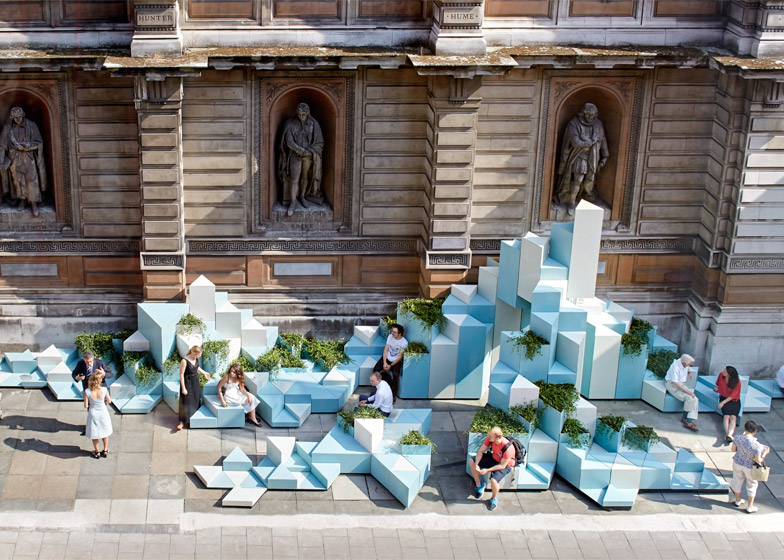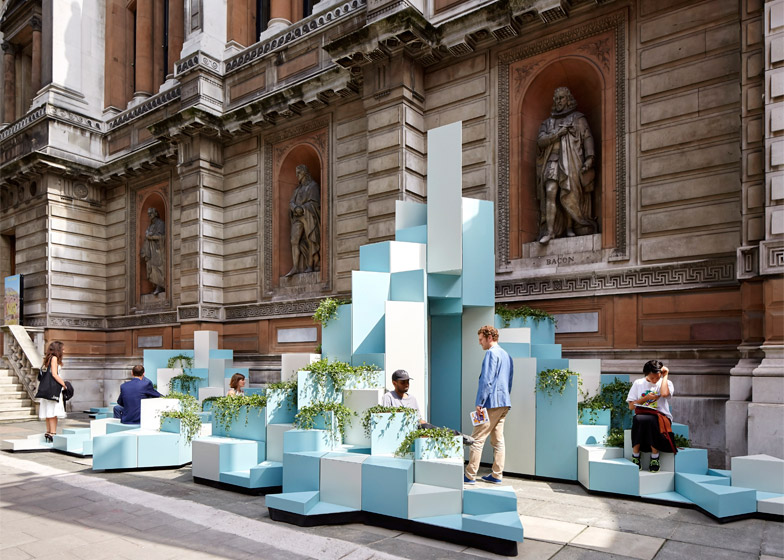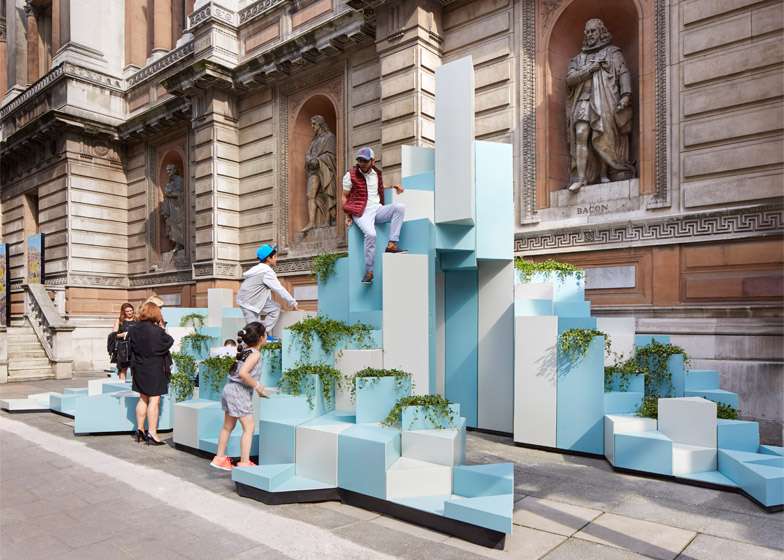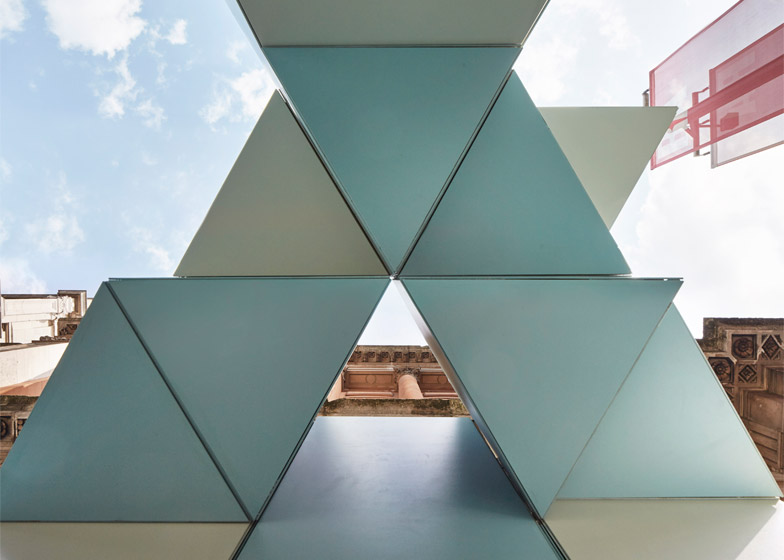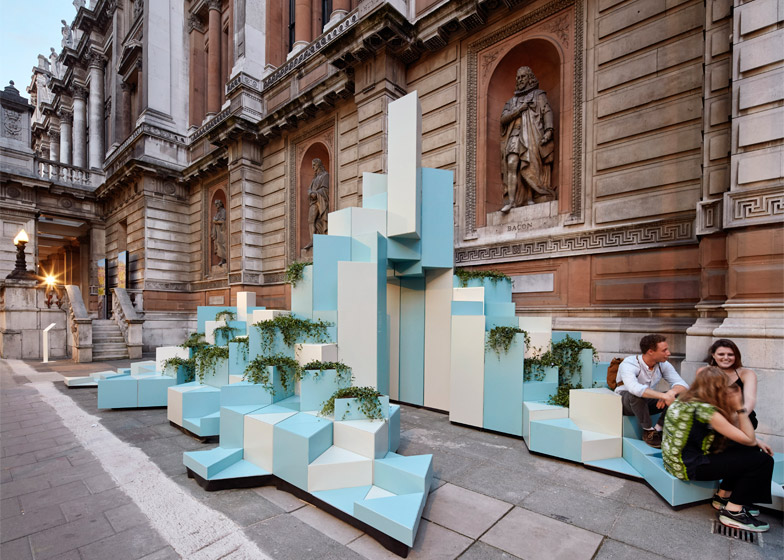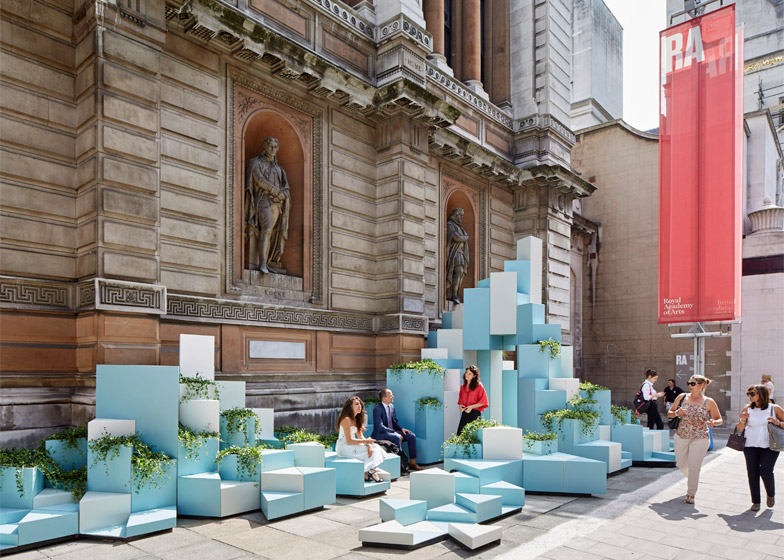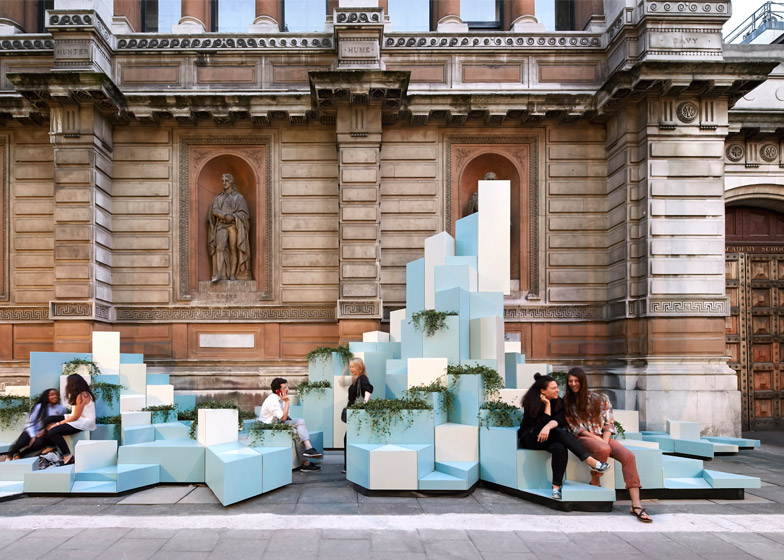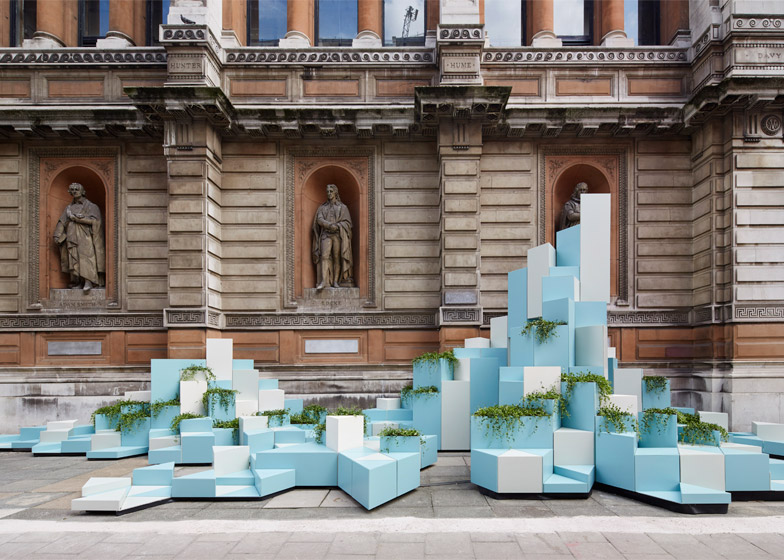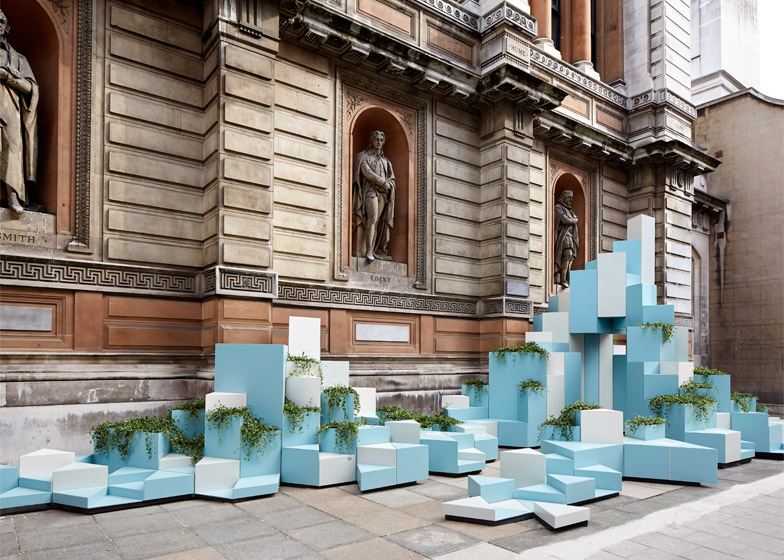Ceramic triangular prisms are arranged as staggered peaks to form this public installation by Istanbul studio SO? Architecture and Ideas outside London's Royal Academy of Arts (+ slideshow).
SO? Architecture and Ideas was commissioned by the Royal Academy (RA) and tile company Turkishceramics to create an installation for the entrance to the institution's Grade-II listed Burlington Gardens building.
The Unexpected Hill was a response to the theme of transformation set by the RA – acknowledging the building's imminent renovation by David Chipperfield, which will include the addition of a bridge between Burlington Gardens and the main Burlington House building, and a reconfiguration of the internal layouts.
Aiming to reconsider the traditional use of ceramics, SO? Architecture and Ideas based its design on Muqarnas – a form of ornamental tiled vaulting commonly found in Islamic architecture.
The studio interpreted the decorative typology's composition of tessellating geometric volumes as a series of triangular prisms of various lengths.
"We manipulated a geometrical pattern of triangles to create a 3D form," said SO? co-founder Sevince Bayrak.
"As an example of using geometry to convert a 2D object into a 3D space, the structural principles of Muqarnas help us create a hill, the highest point of the 3D structure, which will be a tunnel that visitors can pass through."
Stood on their ends, the columns are clad with white and light blue tiles made from the lightest ceramic in the world, according to the manufacturers.
The staggered arrangement provides a public seating area and a climbing opportunity for visitors. Some of the volumes are hollowed out and act as planters, adding greenery to the "hill".
"SO? Architecture and Ideas' installation is a playful intervention that transforms a currently under-utilised space into a much needed place in Mayfair where people can sit and take time out, or explore and come together," said Kate Goodwin, the RA's head of architecture.
"Ceramic tiles become form rather than decoration and create a structure which both rises from the ground and sits in dialogue with the 19th-century facade of Burlington Gardens," she added.
"It raises debate about how threshold spaces can be inhabited to enliven the streets."
SO? Architecture and Ideas beat three other emerging design practices – OS31, Bureau de Change and Scott Whitby Studio – to win a design competition for the project. This was judged by a panel that included Goodwin, Stanton Williams Architects co-founder Alan Stanton, Peter Oakley of the Royal College of Art, and Turkishceramics chairman Bahadir Kayan.
The installation will host a programme of activities and performances throughout the summer until it closes on 20 September 2015. Other events taking place at the RA this summer include the Annual Architecture Lecture, which will be given by Danish architect Bjarke Ingels on 13 July.
Photography is by Hufton + Crow.

